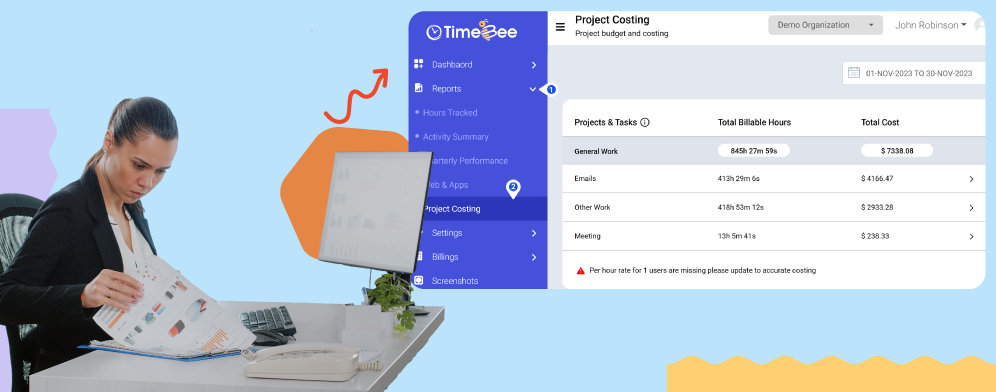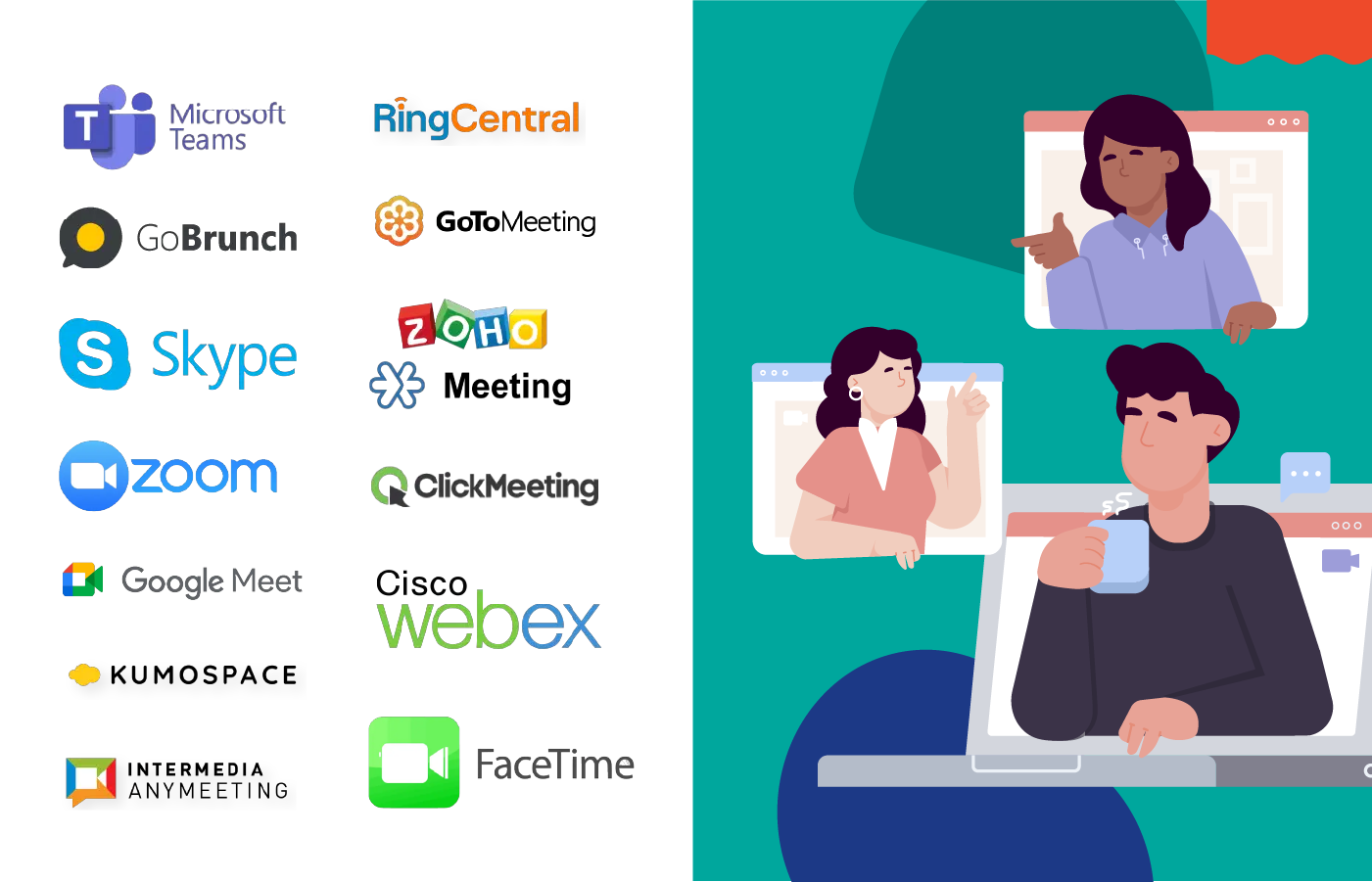TimeBee Time Tracking App for Freelancers and Its General Functionalities
TimeBee is a monitoring app that enables freelancers to automatically track time and bill clients. To use the app, you need to invite outsourced individuals and clients to its web dashboard and then configure both organization and user-specific settings.
The TimeBee settings include, but are not limited to, time zone, working days, shift start/end, minimum hours required, and late arrival/early leave margins. With the configuration done, you can further select the role of each user. To clarify, those with member access get to self-monitor, and ones with admin access are allowed to track all users.
Afterwards, once users begin logging time and activity on TimeBee, all summaries of the recorded data appear on a specific team dashboard, while individual data and detailed reports are displayed in their own categories.
Overall, TimeBee, when collecting activity data, does not disrupt the user's workflow or impact the functioning of the target device. To further ensure this, the app requires minimal input to collect data and produce reports, reducing administrative burden.
Key Features of the TimeBee App
While the TimeBee time tracking app for freelancers has appreciable functionalities and shows through in terms of flexibility and reliability, that alone can do no good. For the app to be deemed dependable, it must offer the essential features every freelancer needs. So, find below the 8 key features TimeBee has and how it works for freelancers.
Timesheets tracker-
Every day, the work hours of freelancers and outsourced individuals working alongside them are logged by TimeBee into timesheets automatically. By calculating the recorded hours from clock-in to clock-out with a one-click timer, the software further takes away the need for any manual input. Additional details within these logged hours are an individual's contribution to the overall logged time and their automated and manual time segmentation.
These timesheets, overall, benefit freelancers by eliminating guesswork and errors on their end. Not only does this result in more accurate billing, but it also ensures that the clients know they are only paying for the time the freelancer worked.
Activity monitoring-

However, time tracking alone does not suffice for most freelancers since they need their clients to understand the value for money, too. For that, TimeBee keeps track of the monitored device's complete usage. Therefore, all the visited websites and apps are detected and uploaded to the dashboard for you to rate.
Depending on the determined rating to be productive, unproductive, or neutral, and the time spent on these websites and apps, TimeBee further categorizes their work hours as productive, unproductive, etc. With the data at hand, freelancers can self-monitor to check for performance drops and determine the amount of time that was spent on distractions.
To add more to the depth of insights provided, screen monitoring can be enabled by freelancers, too, which captures their screens after periodic intervals.
Billable hours-
TimeBee distinguishes billable time from non-billable hours by letting freelancers log their time in specific external projects. All the time recorded in these projects, belonging to particular clients, is accumulated to determine billable hours. However, to make sure that unfair billing does not occur, idle time is removed from the total hours.
How its idle time functionality works is that if TimeBee detects inactivity on the device for a predetermined amount of time, a distraction alert is triggered. Further failure to engage with the pop-up within a minute leads to the app counting the time as idle. To then resume time tracking, users need to re-engage with their screen.
All in all, the internal and external projects are accounted for separately alongside the hourly rates and time tracked.
Invoicing-

The invoicing feature in TimeBee essentially converts the total billable hours into client bills. By applying each employee's external hourly rates to their tracked hours within a client project, a bill for the project is generated. Upon exporting these auto-generated, itemized sheets, invoices are generated. But what is the need for this?
Simply put, accurate time logs alone are not enough since errors can still occur in billing. By automating the whole process, time alongside unnecessary efforts are saved. Not only that, but since TimeBee generates invoices quickly, payment collection is also made easier and less prone to human errors.
Profitability reports-
Now, as mentioned earlier, each user has an internal and external hourly rate in TimeBee, i.e., for each client, they can be paid different hourly rates while the internal rate remains the same. By considering an individual's recorded time, local price, and client price, the profit generated by each can be easily calculated.
Then, TimeBee adds all the profits together to provide the full picture of total revenue generated. With each employee's output and overall profit values in front of freelancers, they better see which individuals and clients to continue working with.
Project progress-
When tracking time on TimeBee, users need to not only click its timer but also select a project's task. Once done with a particular task, they can then switch to something else. With each user logging their time on various projects, transparency is maintained. Rather than vague insights into who is working on what, the exact records make it easier to calculate a project's progress.
Freelancers, using TimeBee, can, therefore, see the total time logged on each project and its contribution to the total time recorded. Moreover, upon clicking a project, they can further see the time spent on each of its tasks.
Overall, features like these can be particularly useful for the 70% of freelancers who tend to work on almost four projects at once.
Project costing-

A common hassle for freelancers is keeping track of what each project is costing, since they tend to collaborate with or outsource individuals, too, to manage workload. While time-specific logs for each project are appreciable, the administrative task of calculating their cost is no less troublesome. To counter this recurring problem, freelancers can use TimeBee to determine the cost of each project.
By accounting for the time contributed by each employee to a project, their internal hourly rate, and total pay, the total project cost is automatically made accessible. With the cost at hand, freelancers can really decide if a project is really worth it.
Client management-
Client trust, transparency, and billing disputes are a few of the many roadblocks that freelancers are all too familiar with. To put such issues into perspective, almost 23% of freelance non-payments are a result of disputes over deliverables. To avoid such instances from occurring, proper client management is significant.
But how so? TimeBee offers separate client dashboards and provides each with the logs they need, like activity summaries, project progress, bills, logged hours, etc. These insights create transparency, ensure client trust, and prevent any disputes from taking place.
Note that while a time tracking app for freelancers is a reliable and reasonable way to go, doing so without any prior research and understanding can leave you in a rut. Before employing such tools, you must ensure that everyone associated with your projects is on board with the change, be it outsourced individuals or clients. When not on the same page, monumental shifts in workflows like these can do more harm than good.
Nonetheless, if proper change management is ensured, no one can turn a blind eye to how these tools help avoid burnout, streamline workflows, strengthen client bonds, and lead to fair compensation.















